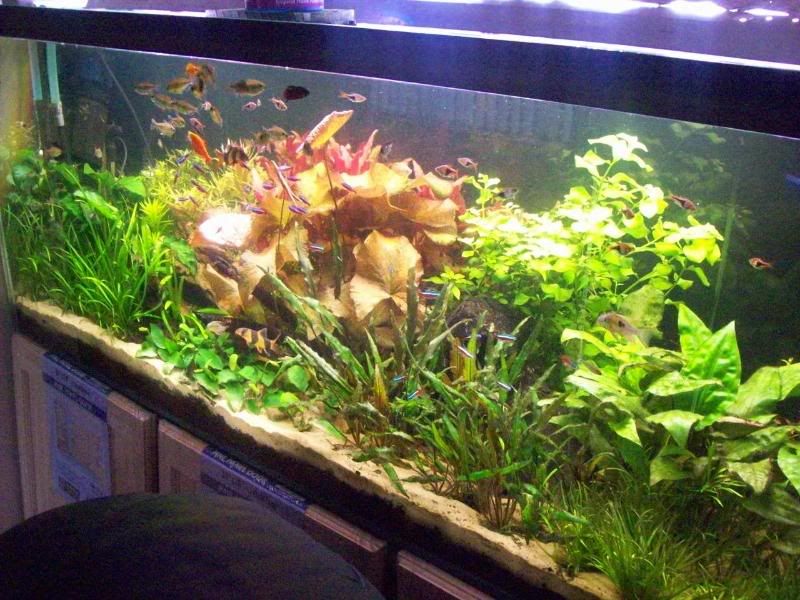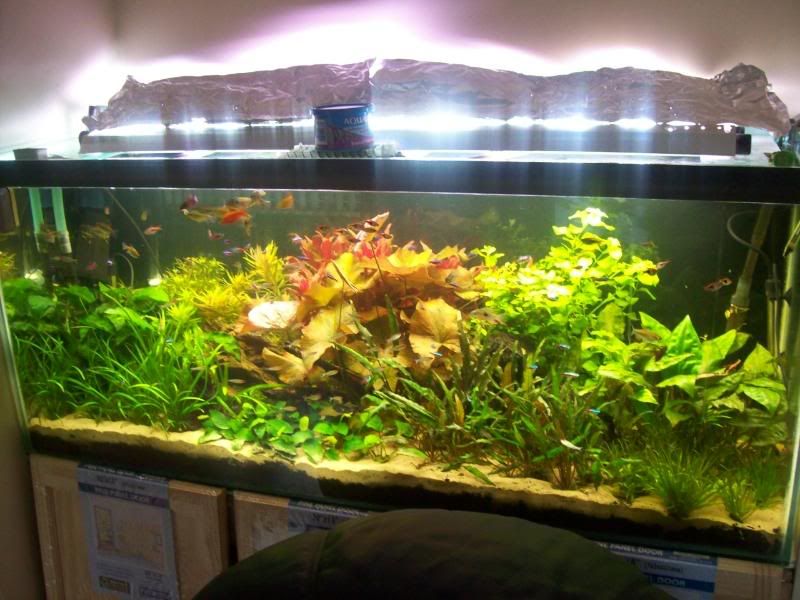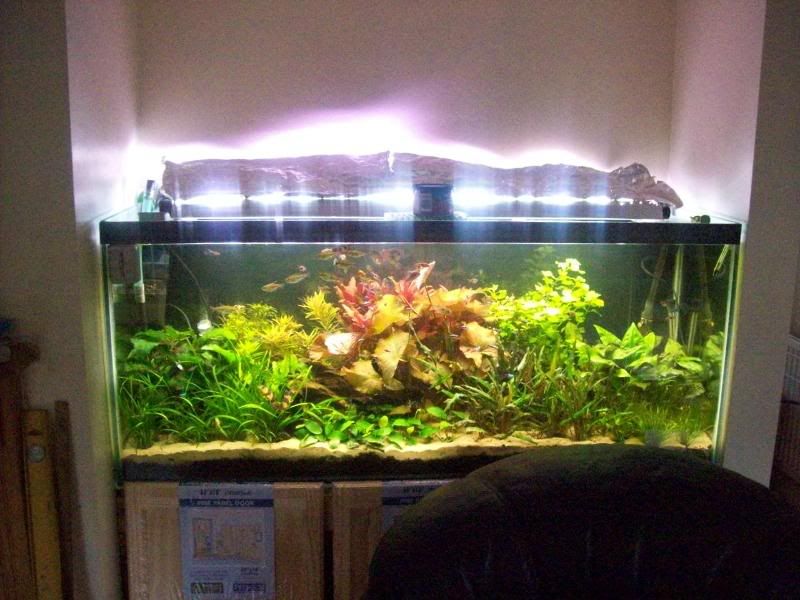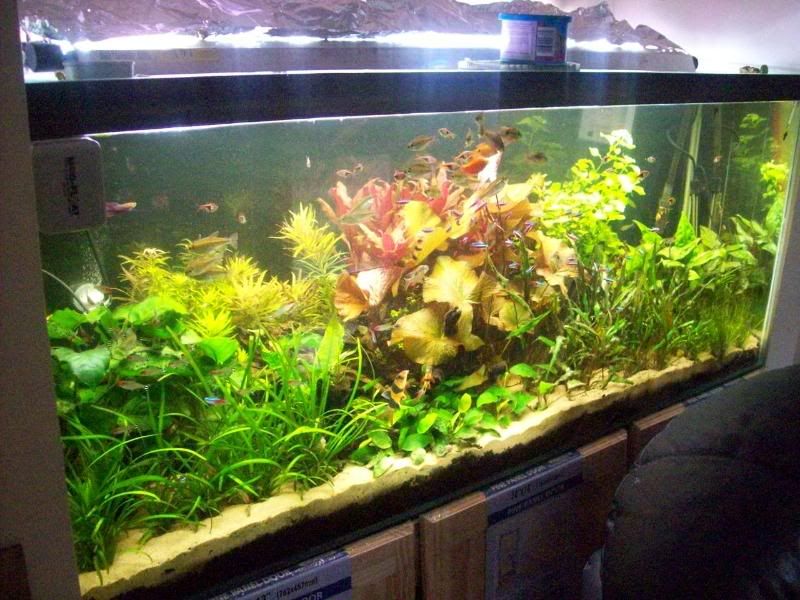As most of you know, gardening is my job as well as my hobby. But occasionally i like to get away from the garden and indulge in my other hobby.....aquarium gardens !!!!!
I've kept tropical fish for 35 years but in the past few years, i've tried my hand at the underwater gardening section of the hobby with tremendous success.
Aquatic plants are pretty much the same as terrestrial plants...they both require water, carbon dioxide and light to live and need nutrients and lots of care in order to thrive. The only difference between the two is that aquatic plants do not contain cellulose...the stuff that keeps terrestrial plants upright.
There are many other links too. Lots of aquatic plants are actually tropical bog plants and will grow partially submerged or even with just wet roots. However, there are only a few terrestrial plants that will grow in aquatic situations....creeping jenny (lysemachia sp), peace lilly (spatiphyllum) and aluminium plant (pilea caderei) will do well but other terrestrial plants such as fittonia, draceana and even parlour palms...all offered for sale regularly as aquarium plants, only tend to live a few months when submerged.
My aquarium is reletively new at just 6 weeks old. It measures 57" long x 24" high x 19" wide and was made especially to fit in my alcove.
For the substrate, i used normal Arthur Bowers peat based potting compost at a depth of 2" with 2" of playpit sand on top. The plants seem to love it but if you ever need to move the tank, it would mean a new substrate.
There are many many different things you can use for planting into. Anything from clay-based cat litters to Akadama (bonsai compost) can be used although the aquatic based ones are very good if not a bit expensive !!!!
lighting has to be chosen with care too. Most aquarium lights have a colour temperature rating or Kelvin rating. Sunlight is around 6500k, a higher K....10,000 or higher will give you a more crisp white/blue effect which is often used on marine reef aquariums whereas a lower kelvin such as 4500k or lower will make things look yellow.
Getting the balance right is not only important for the plants but also important for viewing purposes.
The amount of "watts per gallon" (WPG) is important. I have 6 x 40 watt tubes in my 90 gallon tank. Thak gives my 240 watts of light divided by 90 gives me 3 WPG.
1 WPG is considdered low light, 2 WPG is considdered med-high and 3 WPG is high lighting.
this obviously needs to be taken into considderation when chosing plants as some require bright light and some require low.
I also pump in carbon dioxide. I have a 2KG CO2 fire extinguisher which provides my plants with CO2. I have a regulator on the extinguishers to reduce the flow and the CO2 is diffused into the water by a small ceramic disc which is porous and allows a fine stream of bubbles get into the tank which is then easily dissolved.
By the end of the day, my plants are producing streams of oxygen bubbles due to taking in loads of CO2. The CO2 is linked to a solenoid valve which is on a timer and it switches off the CO2 at night (plants take in oxygen at night) and on again when the lights come on.
Once growing, we need to keep the plants in good condition. A weekly liquid feed of a proprietry aquarium plant food is usually ample although some people do use tomerite !!!
There are very few pests and diseases....snails being one pest and plant eating fish being another. Algea is probably the biggest hastle but there are ways and means around it.
So once you have the basics in place, you can then create your own underwater garden. There are lots of "arty-farty" designs that really don't appeal to me.....i like the dense jungle look which shows off clumps of different colours, textures and heights.
There is a major competition each year where aquarists design tanks for a competition....here's a link to a few UK tanks
www.practicalfishkeeping.co.uk/pfk/pages/blog.php?blogid=129So finally, here's my tank. as mentioned, it's only in it's infancy so it will improve over the months. I'll do a few updates so watch this space.



